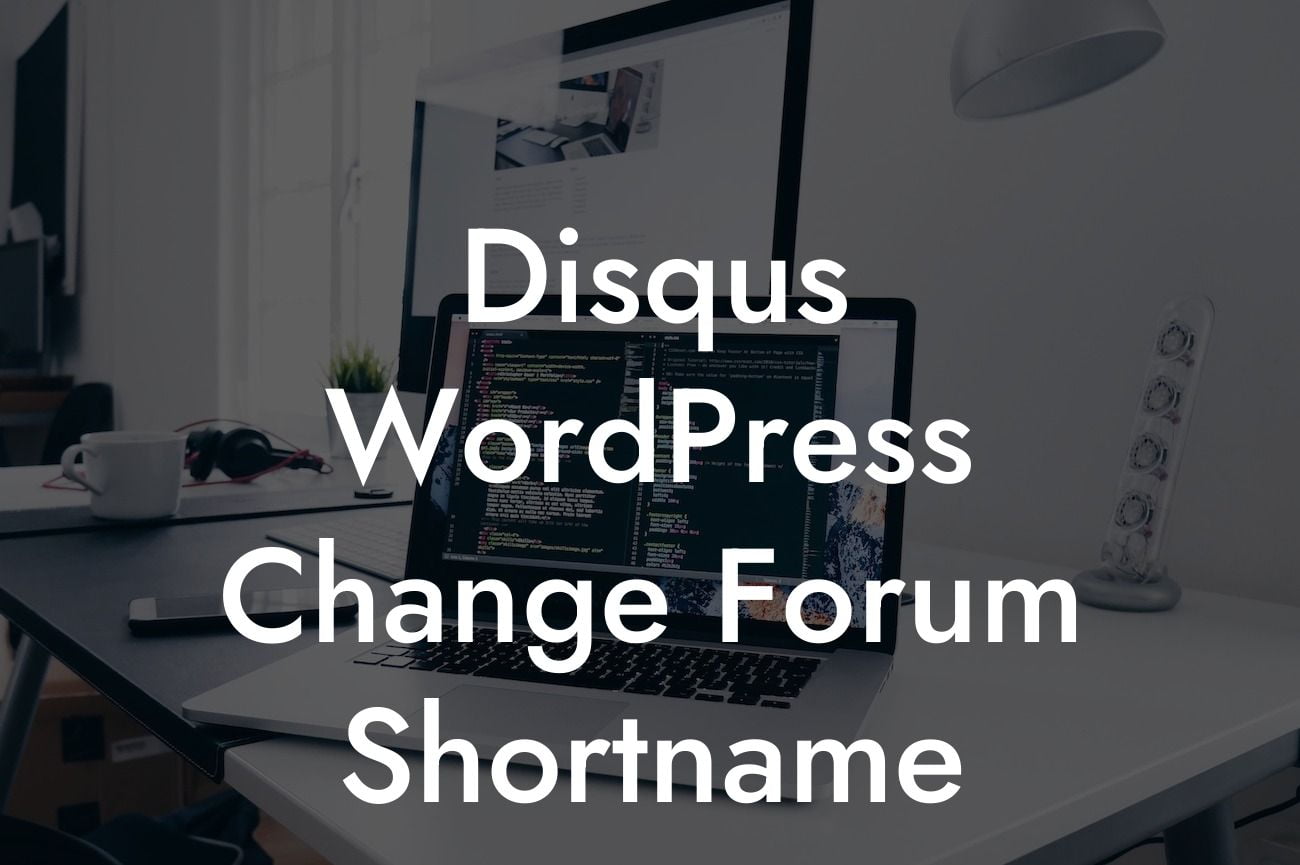Disqus is a popular commenting system that allows website owners to engage with their visitors through comments on their WordPress sites. By default, when you install the Disqus plugin in WordPress, it assigns a unique forum shortname for your website. However, there may be instances where you want to change this shortname, whether for branding purposes or to align it with your website's name. In this guide, we will walk you through the steps to change the Disqus forum shortname in WordPress and enhance your website's commenting experience.
Engaging Headline: Why Change the Disqus Forum Shortname in WordPress?
Changing the Disqus forum shortname in WordPress offers numerous benefits. First and foremost, it helps you establish a cohesive brand presence across your website and commenting section. When your shortname aligns with your website's name or domain, it enhances recognizability and strengthens your brand identity.
Furthermore, changing the shortname can help you track and analyze comments more efficiently. When you have multiple websites or sections within a website, using different shortnames provides you with separate analytics and insights for each. This can aid in better understanding your audience, identifying trends, and tailoring your content accordingly.
Step-by-Step Guide: How to Change the Disqus Forum Shortname in WordPress
Looking For a Custom QuickBook Integration?
Engaging Headline: Step 1 - Accessing Disqus Settings in WordPress
To change the Disqus forum shortname, you need to access the Disqus settings in your WordPress dashboard. Follow these steps:
1. Login to your WordPress dashboard.
2. Navigate to the "Settings" tab.
3. Click on "Disqus" in the dropdown menu.
Engaging Headline: Step 2 - Disconnecting Existing Disqus Account
Before changing the shortname, you need to disconnect your existing Disqus account from your WordPress website. This will allow you to set up a new account or use an existing account with a different shortname. Here's how:
1. In the Disqus settings page, locate the "Disqus Configuration" section.
2. Click on the "Disconnect" button.
3. Confirm the disconnection.
Engaging Headline: Step 3 - Creating a New Disqus Account or Using an Existing Account
After disconnecting the existing account, you have two options: create a new Disqus account or use an existing account with a different shortname. Choose the option that suits your requirements, and follow these steps accordingly:
For Creating a New Account:
1. Visit the Disqus website (disqus.com) and click on "Get Started."
2. Fill in the necessary information and follow the registration process.
3. After creating the account, log in to your Disqus dashboard.
For Using an Existing Account:
1. Log in to your existing Disqus account.
2. In the Disqus dashboard, navigate to the "Admin" tab, and select the website associated with your WordPress site.
Engaging Headline: Step 4 - Connecting the New Disqus Account to Your WordPress Website
Once you have a new Disqus account or have decided to use an existing account, it's time to connect it to your WordPress website. Follow these steps:
1. Go back to the Disqus settings page in your WordPress dashboard.
2. Scroll down to the "Disqus Shortname" section.
3. Enter the new shortname you want to use.
4. Click on the "Save Changes" button.
5. Your WordPress site is now connected to the updated Disqus shortname.
Disqus Wordpress Change Forum Shortname Example:
Changing the Disqus forum shortname is a simple yet impactful task. Let's consider the example of Chris, a small business owner who recently rebranded his website. He wanted to align the commenting section with the new brand name. By following the steps outlined in this guide, Chris successfully changed the Disqus forum shortname in WordPress. Now, his website reflects a cohesive brand presence, increasing recognition and engagement from his visitors.
By changing the Disqus forum shortname in WordPress, you can unleash the power of cohesive branding and enhanced analytics for your website. Explore our other guides at DamnWoo to discover more ways to supercharge your online success. Don't forget to check out our awesome WordPress plugins designed exclusively for small businesses and entrepreneurs. Share this article with others who may find it useful and start optimizing your website's commenting experience today.
[CTA] Try our DamnWoo WordPress plugins to elevate your online presence now.













